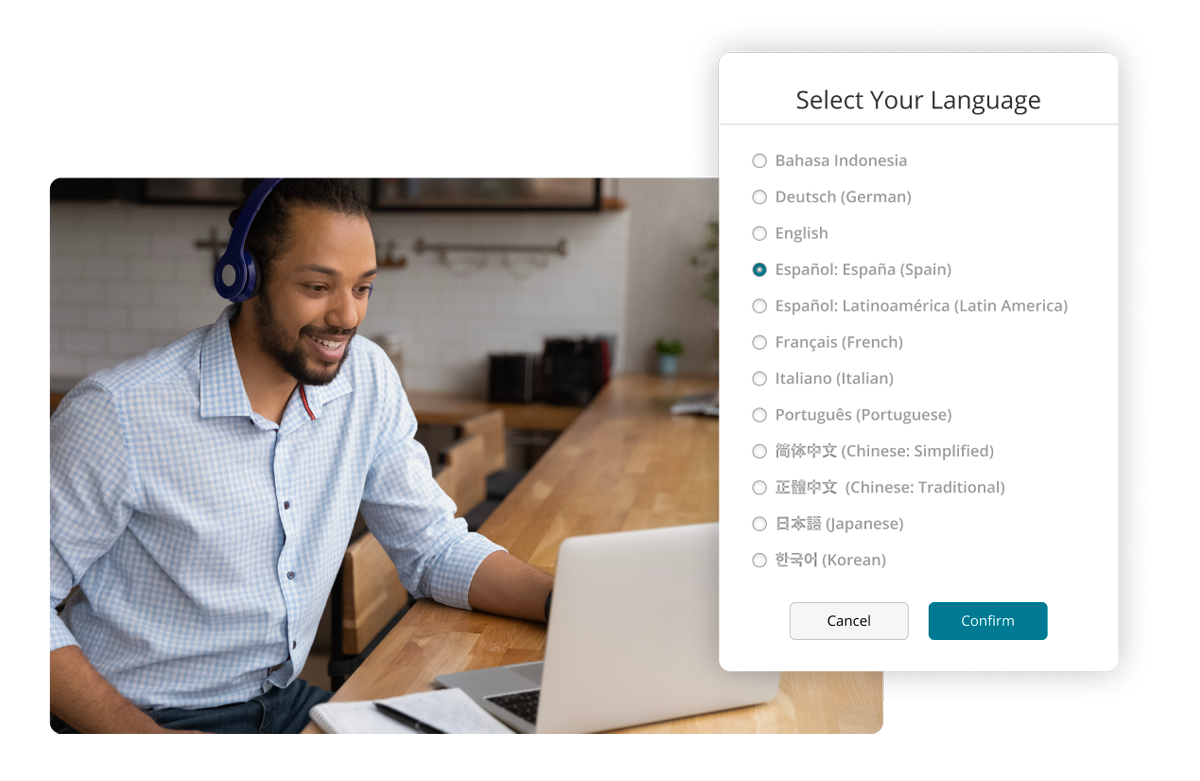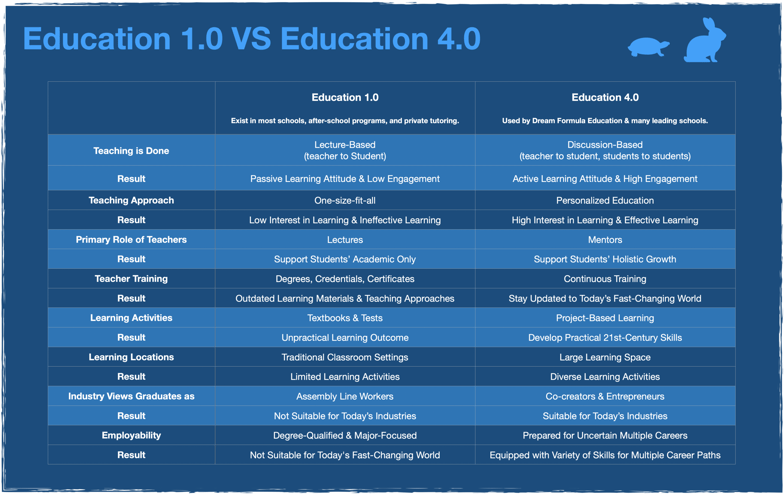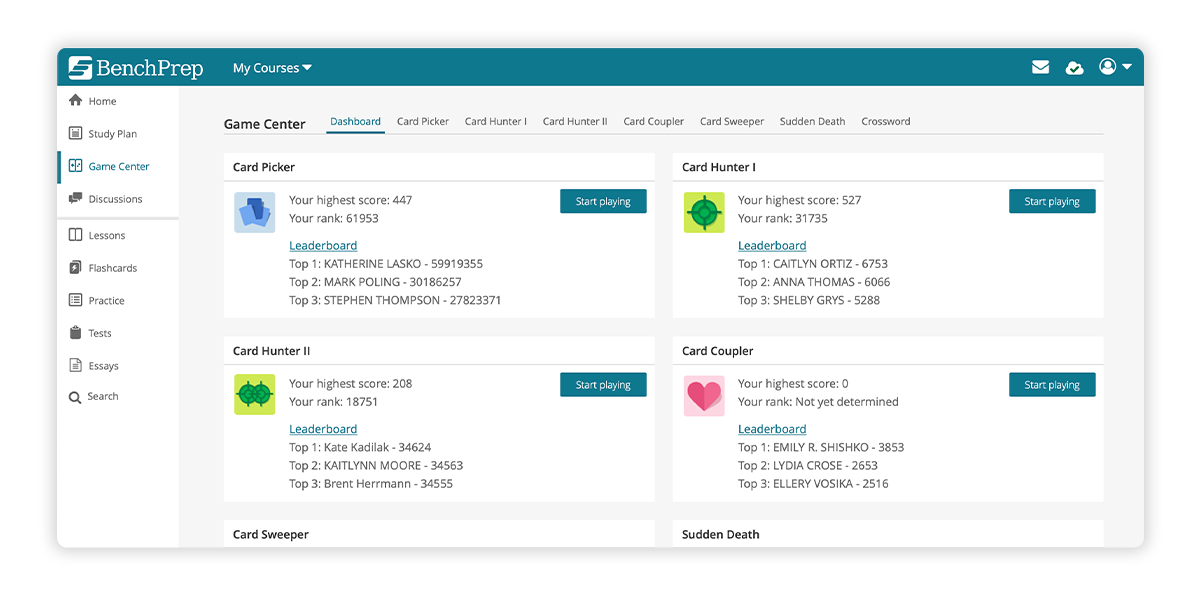5 Hot eLearning Trends to Adopt in 2023 (or Risk Your Certification Training Program Going Up in Flames)
Are you up to date on the latest eLearning trends? Here are five you need to know so you can stay competitive in the coming year.
The future is bright for the world of professional eLearning. In fact, it's predicted that between the years 2020 to 2025, the eLearning market will grow by upwards of 200%.
The last few years have been a whirlwind when it comes to the learning business industry, and 2022 came with its own set of unique challenges:
- The Great Resignation (or the Great Reshuffle) showed no signs of slowing down.
- Blended and hybrid learning has come front and center as organizations focused on keeping their learners engaged.
- Organizations faced a shaky economy, social upheaval, and a general sense of distrust in large institutions and expertise.
Now more than ever, learning and credentialing organizations must adopt emerging eLearning trends to deliver engaging learning experiences that meet learners where they are and support them on their path to certification.
Where is the credentialing, certification training, and eLearning sector heading in 2023? And, more importantly, what trends should you adopt to help your learners meet their objectives and grow your certification programs? Here we share 5 hot eLearning trends that we are already seeing unfold.
1. Increased Demand for Customizable and Micro-Credentials
The modern business world is evolving into a skills-based economy where specific credentials and certifications are more valuable than traditional degrees. Career-minded candidates will turn to credentialing programs to get ahead in their highly competitive fields. They will also expect those programs to provide a clear path into the future, with multiple credentials that will open doors to different fields and job opportunities. Let's look at two emerging models: stacking and stapling.
Stackable Credentials
Stackable credentials deconstruct traditional degree programs (associate, bachelor’s, and master’s) into smaller, bite-sized milestones. Candidates can generally complete these units within a month—sometimes even within days or hours, depending on the subject.
Organizations are shifting away from the four-year degree as a must-have for gainful employment. Instead, credential stacking has emerged as a macrotrend in businesses at every level.
To get on board with this trend, look at your program and determine where you can break it up into part-time credentialing programs. For example, break sections down into boot camps, those boot camps into certificates, and so on. You must also consider whether you’re breaking your program into vertical or horizontal stacks:
- Vertical Stacks help candidates climb a career ladder, as credentialing requires additional training and certification.
- Horizontal Stacks move candidates along a career path as they earn additional certifications through assessment-based courses.
Stackable credentials also help busy professionals obtain necessary certifications without the extensive time commitment. Professionals likely have families, full-time jobs, and/or other obligations. When are they supposed to commit to a four-year degree? Stackable credentials help them achieve their goals even if they don’t finish. For example, they can combine or stack that year or two of college with certifications and other credentials.
Stapling Credentials
A newer approach to credentials is known as stapling. Organizations or universities can "staple" certifications to degrees or jobs.
Colleges could make a list of industry-recognized credentials or organizations can identify colleges and universities that they could staple their certifications to. From there, you can integrate those credentials into your current programs or tweak distributional requirements to demand further credentialing.
A great example of "stapling" is Western Governors University. When a student earns an IT degree from WGU, they don't just graduate with a diploma. They'll also earn extremely valuable industry certifications—at no extra cost. 

Stapling is a great approach because candidates seek credentials for one reason: to get the jobs they desire. To encourage them even further, stapling certifications to degrees or jobs will guarantee that once they’ve completed a credentialing course, they’ll have one foot in the door.
Industry leaders worldwide saw these eLearning trends and recognized the importance of stapling credentials to jobs. For example, AT&T allocated $1 billion to retraining about half of its workforce. Amazon also invested $700 million into upskilling employees for higher-skilled jobs. Finally, Waste Management granted access to 170 fully funded degree and certification programs for 36,000 full-time employees.
Reaching More Candidates With Micro-Credentials
In the same vein as these customizable credentials, micro-credentials are stackable courses your candidates can take to hone specific skills in their industry. They offer busy professionals a way to continue their learning journey, allowing them to develop the skills they need to meet their career goals. Candidates can work through the courses at their own pace.
In addition, micro-credentials can bolster your organization’s non-dues revenue stream. Because you can package and sell micro-credentials to association members and non-members, you can open yourself up to more candidates and bring in more money.
Their bite-sized nature makes micro-credentialing programs easy to bundle and market. Candidates will:
- Review course materials, be they short seminars, eBooks, presentations, or games. Remember, most micro-credentials are asynchronous, meaning candidates will complete portions independently.
- Complete corresponding review assignments.
- Pass their assessment or skills exam to display mastery.
- Earn their appropriate micro-credentialing certificate (or badge).
2. Lifelong Learning to Establish Stronger Professional Foundations
One of the most important eLearning trends to consider is how lifelong learning has become an essential part of professional development. Career-minded individuals recognize that every day presents a new opportunity to learn and grow. Thus, they’ll leverage any chance they get to learn a new skill or sharpen an existing one.
Lifelong learning blends a candidate’s life and career. They likely have diverse needs, situations, and motivations, so their learning pathway must work for them, not the other way around. In addition, lifelong learning can lead to several cognitive and overall health benefits in older adults. It’s never too late to continue the learning journey.
For organizations, the trend toward lifelong learning means more opportunities to market their credentialing programs. According to Professor Simon Barrie of Western Sydney University, the move to Industry 4.0 is changing the nature of work worldwide: “For some industries, that means they are adapting to the change—investing in cloud computing, AI, blockchain, or AV production, for example, and all of which require capability uplifts in their workforce.”
Lifelong learning tackles many different areas branching from these emerging trends. This includes opportunities for continued education, on-the-job learning, reskilling, upskilling, and shortening the skills gap—all of which will aid those going through a career change or pursuing new goals.

Put Learner Needs First
Professionals will return to education again and again as life unfolds. Associations and credentialing organizations must offer them a personalized, flexible relationship with their new learning journey. Remember, each learner has unique objectives, needs, and influences. Ensure you cater to those characteristics to foster an effective learning atmosphere.
While technical expertise is necessary, it’s not the only factor at play. Organizations can't neglect the development of human and social skills, as they’re increasingly crucial to preparing tomorrow’s workforce.
According to Nelson Baker, dean of Georgia Tech Professional Education, if organizations want to keep pace with new eLearning trends, they must ensure their lifelong learning opportunities are “continuously listening to the needs of the learner, thus high-quality, flexible, affordable, and meet the needs of working professionals and the industries that push them to grow."
3. Globalized Certifications and Credentials Will Address and Help Close the Skills Gap
Businesses are facing an unprecedented challenge: the labor force simply doesn’t have enough qualified workers. In other words, as jobs shift and evolve, workers aren’t keeping up with their development. And, to make matters worse, the number of skills it now takes to master one role is increasing.
So, what causes a skills gap?
There are several contributing factors:
1. Technological advancements and the lack of technical training and education
2. Retiring Baby Boomers are leaving more senior-level roles open with not enough skilled people to fill them
3. Lack of soft-skills development
But the bulk of the skills gap is the result of an educational system that hasn’t kept pace with the evolving economy. Unless organizations invest in on- and off-site training, the skills gap will continue to grow.
To ensure workers are equipped with the skills they need to succeed, educational programs at all levels must better align with the needs of the modern economy. This is where professional certifications and credentials come into play.
There is a tremendous opportunity for learning, certification, and credentialing businesses to expand into global markets to address the skills gap directly. As more people turn to these types of credentials vs. a four-year degree, certification and credentialing organizations need to have a globalization and localization strategy in place.
eLearning Localization for Better Engagement
Organizations—particularly those with a global reach—have the unique opportunity to leverage eLearning localization to offer learners a better overall experience. In doing so, they’ll see significant increases in product adoption and engagement. But what is eLearning localization, and how can organizations better implement it?

The COVID-19 pandemic forced companies worldwide to shift to a system of hybrid and remote work. While the shift provided many benefits, it also opened the doors to new challenges, specifically eLearning for remote workers in other countries and from different cultures.
Ninety percent of people want to learn in their native tongue, so localizing your LMS is the best way to give remote global learners what they want. However, there’s more to localization than just translating your existing modules into different languages.
eLearning localization adapts your courses to the target audience's culture, not just their language. You may change images, fonts, currency, idioms, dates, tone, style, and units of measurement to build a program that feels native to different cultures. For example, you—a U.S.-based company—wouldn’t have your European learners work with something other than the metric system.
Both a globalization and localization strategy in place is the key to growing your certification programs and membership programs, and helping close the global skills-gap.
4. Transition to Education 4.0: The Machine Learning-Driven Future
Education 4.0 is a purposeful approach to learning driven by the fourth industrial revolution. It's all about transforming the future of learning using advanced technology and automation.
Let's back up and take a look at the progression to Education 4.0.
A product of the industrial era, Education 1.0 represents the operational models of some modern institutions. In Education 1.0, a small number of students are taught specific skills through specific methods. It forbids the use of technology, and the teacher acts as a knowledge leader.
Education 2.0 was born out of major advances in technology during the 2000s including expanded access to the internet. It was designed to address the problem of over-reliance on a single learning resource (the teacher). While teachers still played a huge role in knowledge sharing, learners now had access to online resources and other students to collaborate with and learn from.
Education 3.0 leverages digital capabilities to combine the best of both Education 1.0 and 2.0. Education 3.0 leans on tried-and-true practices and data-backed strategies to provide learners with flexible and engaging learning experiences. Education 3.0 addresses the modern learner’s needs and tailors course materials to work for them. At its core, it supports an interconnected, all-in-one learning ecosystem for smarter decision-making.
As we make our way to the present day, every industry is undergoing a massive digital transformation due to technological advancements. As a result, the skills gap continues to widen and the need for reskilling and upskilling become critical for professionals to stay relevant in the market. Enter: Education 4.0.
Education 4.0 includes online assessments, robotics, Artificial Intelligence (AI), big data, Virtual Reality (VR), Augmented Reality (AR), and virtual environments. We will see paradigm shifts such as competency-based learning instead of knowledge-based education, lifelong learning instead of front-loaded learning, and continuous learning instead of a one-stop-shop degree program.

As we continue into this machine-learning-driven future, organizations must adapt their certification and learning programs accordingly.
This leads us to our next and final trend...
5. Personalized Learning Pathways Backed by Data
No matter your target audience, modern learners have different goals, styles, and objectives. Addressing their individual needs may sound daunting, but associations and credentialing organizations can unburden themselves by leaning on data-driven learning experiences.
Organizations must understand their learners better to serve them better. Some common characteristics include:
- They tend to be easily distracted
- They want instant gratification
- They are eager and ready to learn
- They crave social learning
- They likely work remotely, either part- or full-time
Personalized learning experiences let candidates leverage their free time for study and review. They can view microlearning modules from the comfort of their mobile devices and complete them at their own pace. While they engage with your programs, you’ll receive actionable insights into how your modules are performing, which need improvement, and which you can leave alone for now.
To kick-start your personalized data-backed journey, look for trends and patterns as candidates move through your program. Are they starting strong but sputtering out halfway through? This might suggest your program isn’t holding their attention. Consider leveraging microlearning strategies to solve this issue, enabling learners to complete sections in under 20 minutes.
Next, put yourself in your candidate's shoes. Ask yourself who they are, what kind of learner they are, and what type of professional they hope to be. Do they have plenty of free time to dedicate to course material, or are they full-time employees looking for continued education? Long-form material might work for some, whereas games, flashcards, and discussion forms will better serve others. Ensure you’re gathering as much data as possible about your learners and repurposing that data into more personalized plans.

For example, BenchPrep has between 250,000 and 400,000 pieces of content within its system. To better manage all these data points, BenchPrep relies on its custom-built learning engine to sort and rank files based on specific criteria.
Transform Your Certification Training Program With an LMS
All signs point to 2023 being another exciting year in the world of professional learning. Keeping these trends in mind as you develop your learning and certification programs will ensure you're setting both your learners and your business up for long-term success.
Another key component to success is having a learning technology in place that enables and grows with you instead of holding you back.
Does it provide your candidates with the capabilities they need to adequately prepare for their high-stakes certification exams? Is your LMS giving you the data you need to make smart (and fast!) business decisions or changes to your program? Are you able to grow your revenue with scalable, test-like study experiences that boost learner confidence? Your LMS should be able to do all of this... and more!






